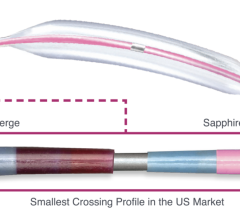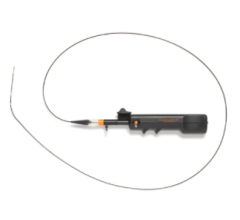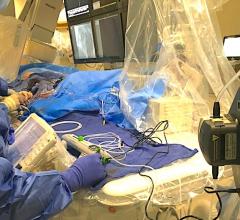
September 20, 2017 — Not-for-profit preclinical research institute CBSET announced that its scientists have published data and analyses providing critical insights into the barrier effects of calcified plaque on drug delivery and the treatment success of adjunctive lesion preparation therapy.
“This preclinical demonstration of the hindrance of drug distribution by calcified tissue and improved drug delivery after modification of calcified atherosclerotic plaque could have significant clinical implications,” said Michael R. Jaff, D.O., president, Newton-Wellesley Hospital, and professor of medicine, Harvard Medical School.
These data demonstrate enhanced paclitaxel distribution in calcified human arteries after lesion treatment using the Diamondback 360 orbital atherectomy system in a cadaver model with simulated flow and are published in the online Journal of Controlled Release.
“These data suggest that clinical association of diminished efficacy of anti-restenotic drugs in severely calcified arteries is at least partly due to limitations in drug absorption,” Jaff continued.
“The data are exciting in that they suggest that subtle modification to the plaque surface can have profound effects on drug penetration. Massive debulking may be a relic of the past, and a more muted approach may extend endovascular intervention for PAD [peripheral artery disease] treatment into vessels even below the knee,” said Elazer Edelman, M.D., Ph.D., chairman and co-founder of CBSET, and senior author of the paper. “This paradigm shift, which relies on quantitative studies, creates an opportunity for the medical device industry to optimize drug delivery therapies to complex lesions.”
Watch the VIDEO "State of Therapy for Critical Limb Ischemia," an interview with Jaff at ACC.16.
For more information: www.sciencedirect.com


 November 08, 2024
November 08, 2024 









